Soft lighting, layered texture, and smart integration are rewriting the script for what happens overhead at mealtime. Today’s best dining-room ceilings aren’t just blank planes; they borrow tricks from architecture, acoustics, and art to shape atmosphere, control sound, and spotlight conversation. Whether you lean classic or contemporary, the 20 ideas below show how ceiling details—large or small—can elevate the ritual of gathering around the table. Explore the possibilities and choose the concept that matches your room’s proportions, budget, and taste.
1. Tray Dining Room Ceiling Adds Instant Height
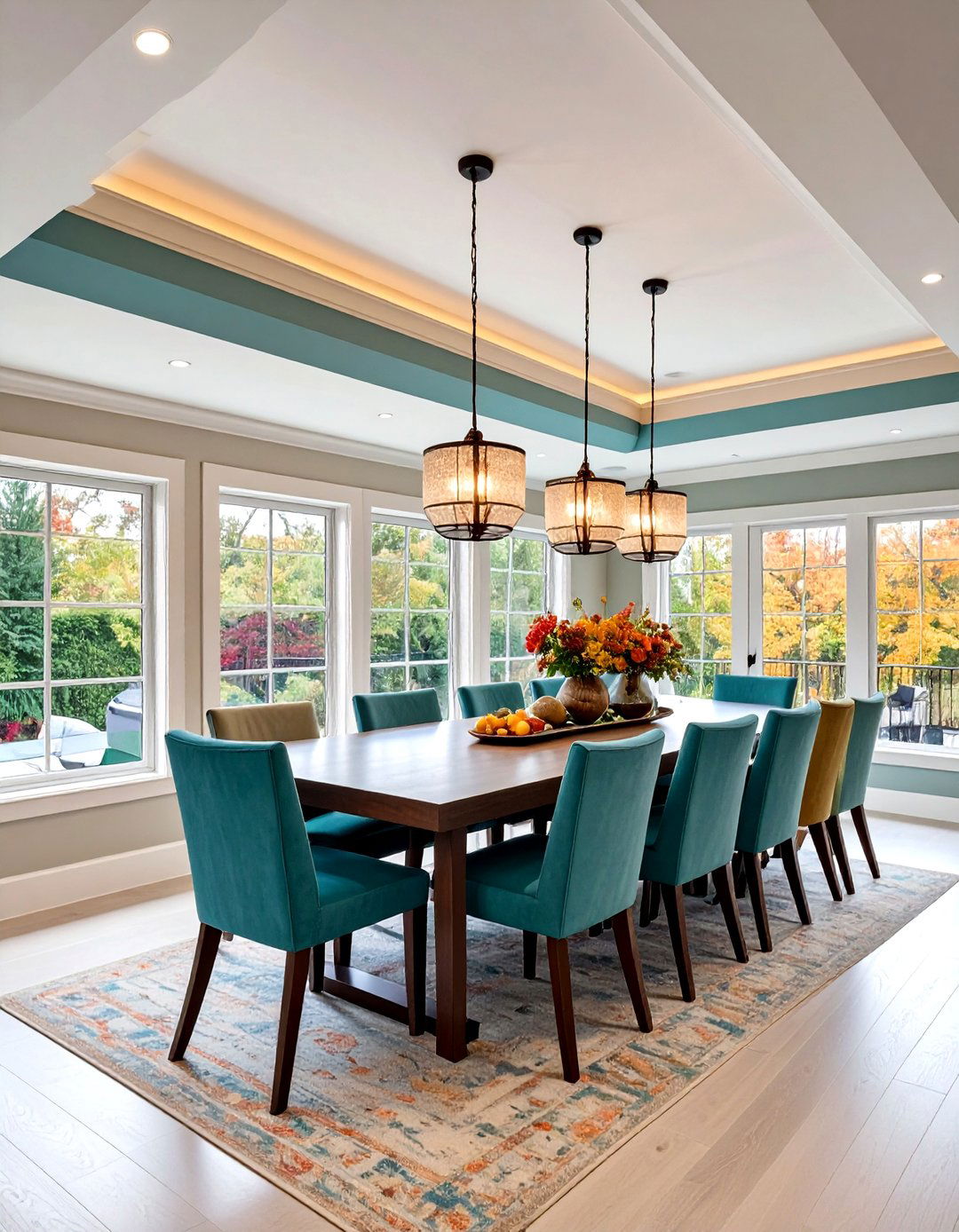
A gently recessed tray ceiling visually lifts the whole space without major structural work. Designers point out that the stepped profile pulls the eye upward and mimics the drama of grand ballrooms, yet it installs with standard framing and drywall. Pairing the inner tray with a slim LED strip or contrasting paint band turns the recess into an elegant light box that flatters food and faces. Best of all, the detail is scale-friendly—depths of just 10–15 cm already create luxury in rooms with standard 2.6-m ceilings. Elle Decor
2. Coffered Dining Room Ceiling for Architectural Grid

Traditional coffers—square or rectangular sunken panels—introduce rhythm and textural shadow that make a dining room feel deliberately crafted. Modern carpenters often pre-assemble lightweight beam frames on a workbench and lift them into place, trimming labor time while preserving crisp miters. Painting coffers and beams the same satin finish keeps things subtle, whereas highlighting beams in a darker tone underlines the geometry. The gridded pattern also hides discreet downlights or small speakers inside the recesses, giving you layered ambience without visible clutter. Fine Homebuilding
3. Exposed-Beam Dining Room Ceiling Brings Rustic Warmth

Swapping drywall for real or faux timbers instantly infuses a dining room ceiling with farmhouse character. Rough-sawn oak, reclaimed pine, or even lightweight polyurethane beam wraps add tactile weight overhead while maintaining modern insulation. The beams double as an anchor for lanterns or iron chandeliers and can be lime-washed or stained to echo tabletop accents. By spacing beams 60-90 cm apart, you balance rustic depth with enough white ceiling between for bounce-back light, preventing the room from feeling cave-like. Pinterest
4. Metallic-Paint Dining Room Ceiling Creates Glamour
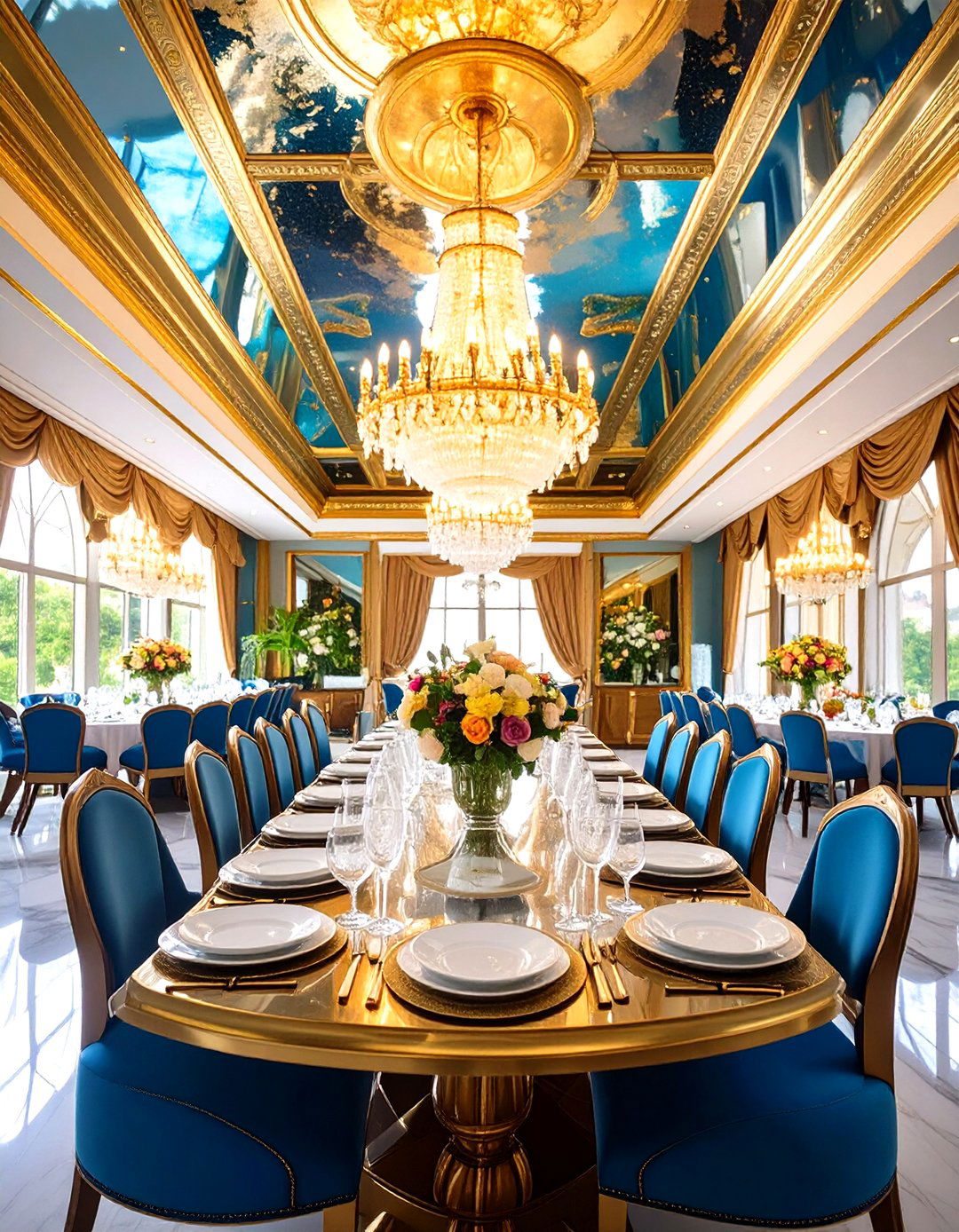
A brushed-gold, pewter, or bronze finish on the ceiling throws warm reflections across glassware and china, turning the entire room into a jewel box after dusk. Specialty metallic paints now come in low-VOC, roller-friendly formulas that resist streaking; two thin coats over a tinted primer usually achieve an even gleam. To keep the effect sophisticated, designers recommend pairing a muted wall palette so the ceiling remains the singular shine element rather than competing with bold colors below. Pinterest
5. Acoustic-Panel Dining Room Ceiling Tames Clatter
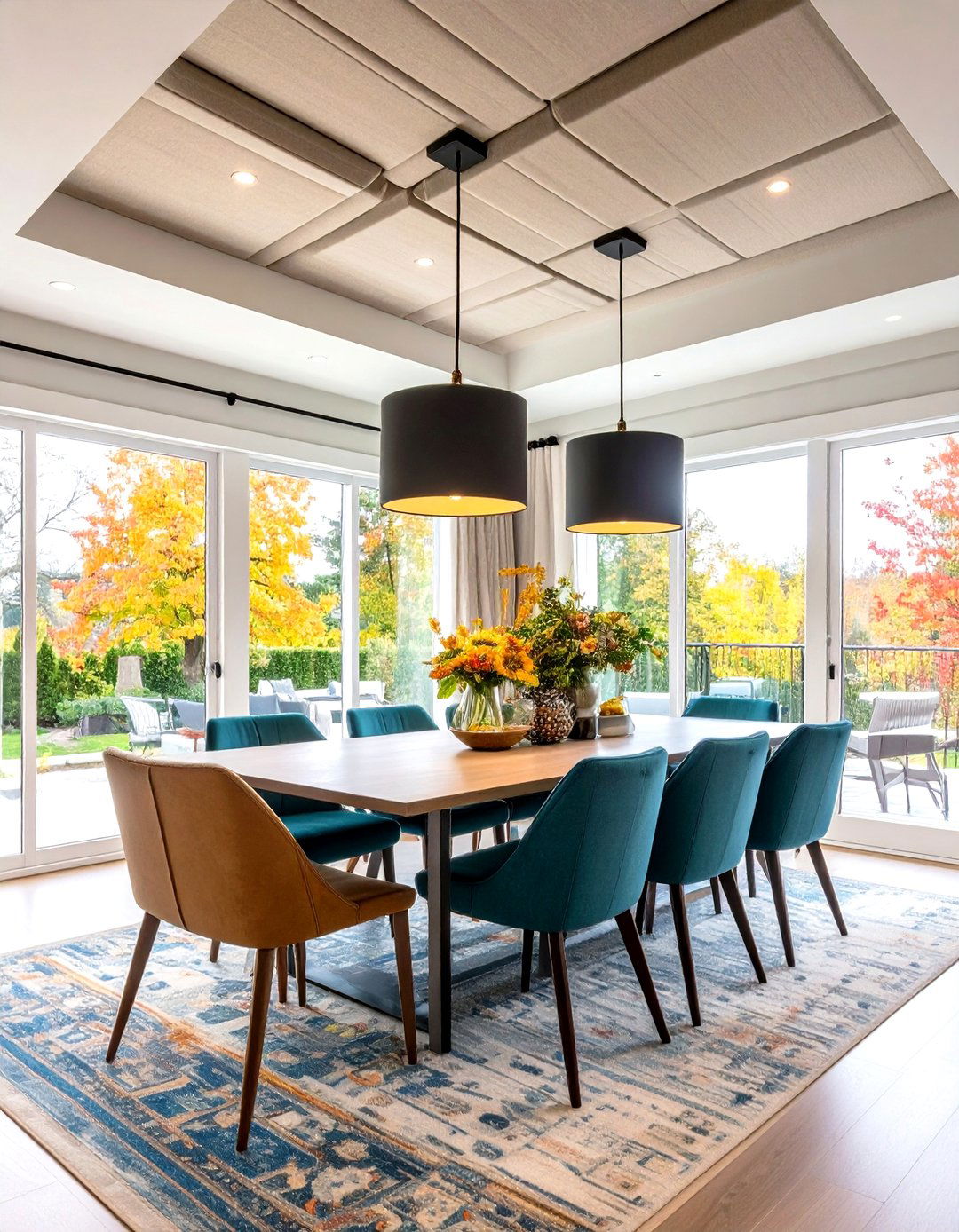
Clinking dishes and lively talk can quickly become noise in an open-plan home. Suspended acoustic clouds or tiled panels absorb mid- and high-frequency sound, letting guests hear conversation without shouting. Today’s panels come wrapped in linen-look fabrics, sustainable felt, or even printed artwork, so they read as decoration rather than tech hardware. Positioning panels directly above the table in a staggered pattern maximizes speech intelligibility while still leaving space for pendant lights.
6. Wallpaper Dining Room Ceiling Delivers Surprise Pattern
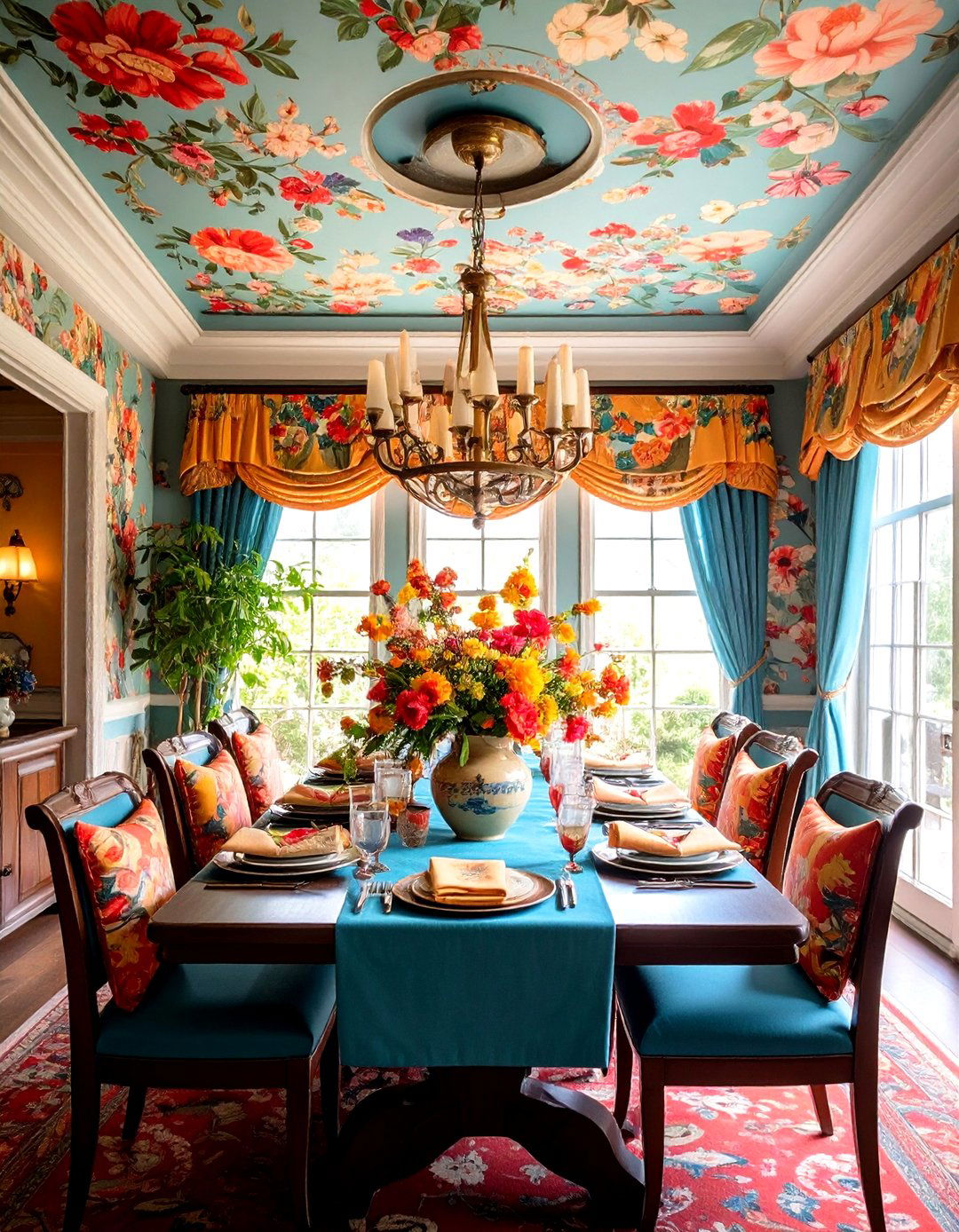
Covering the “fifth wall” with floral chinoiserie, geometric stripes, or abstract clouds is a budget-friendly way to introduce drama. Peel-and-stick papers simplify installation and future updates, while traditional pasted papers deliver crisper seams on tricky angles. Echo a hue from the ceiling pattern on seat cushions or napkins to knit the scheme together without overwhelming the eye. Houzz
7. Modern Ceiling Medallion Frames a Statement Fixture
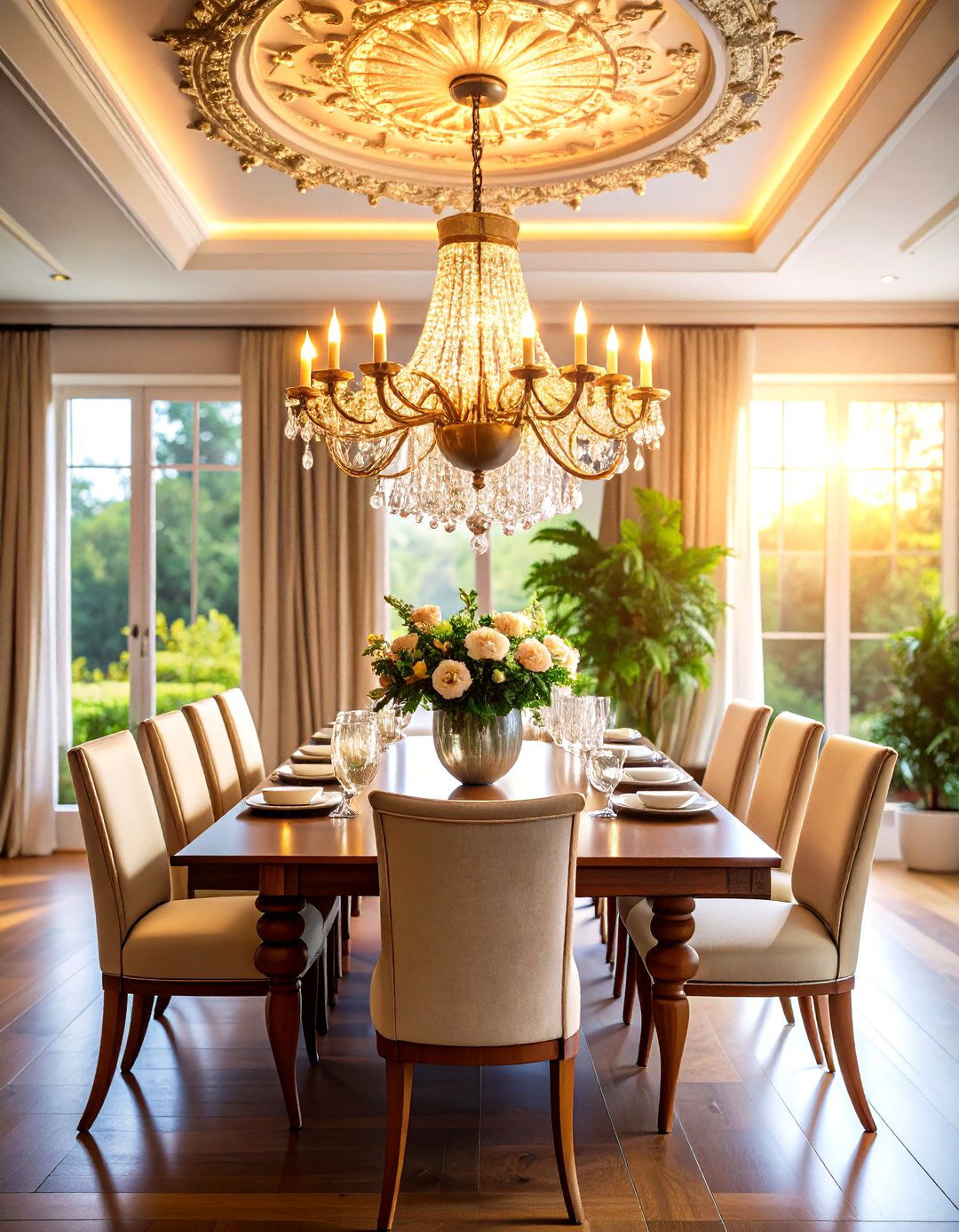
A lightweight polyurethane or MDF medallion—painted to match the ceiling or in a bold contrasting tint—gives your chandelier a tailored backdrop and hides wiring scars. Contemporary profiles range from pared-back circles to angular polygons, so the look works with anything from sculptural LEDs to antique crystal drops. Remember to size the medallion roughly one-third the table width for balanced proportions. Decorative Ceiling Tiles
8. Ornate Plaster Dining Room Ceiling Celebrates Heritage

Restoring or adding Victorian-style plaster cornices, rosettes, and friezes reintroduces craftsmanship lost in many remodels. Flexible molds and lightweight gypsum make revival easier than in the 1890s, while gentle paint stripper systems allow owners to reveal original detail without damage when salvaging period homes. A fresh coat of breathable mineral paint lets the ornament breathe and prevents fine cracks. Brownstoner
9. Skylight Dining Room Ceiling Bathes Meals in Daylight

Carving a roof lightwell above the table channels sky views and midday sun straight onto the spread, reducing daytime electric lighting. Even narrow tubular skylights deliver surprising lumens, and adding deep drywall returns around the opening creates architectural drama while diffusing glare. Specify low-solar-gain glass to curb heat if your climate is intense. Pinterest
10. Shiplap Dining Room Ceiling for Casual Coastal Charm
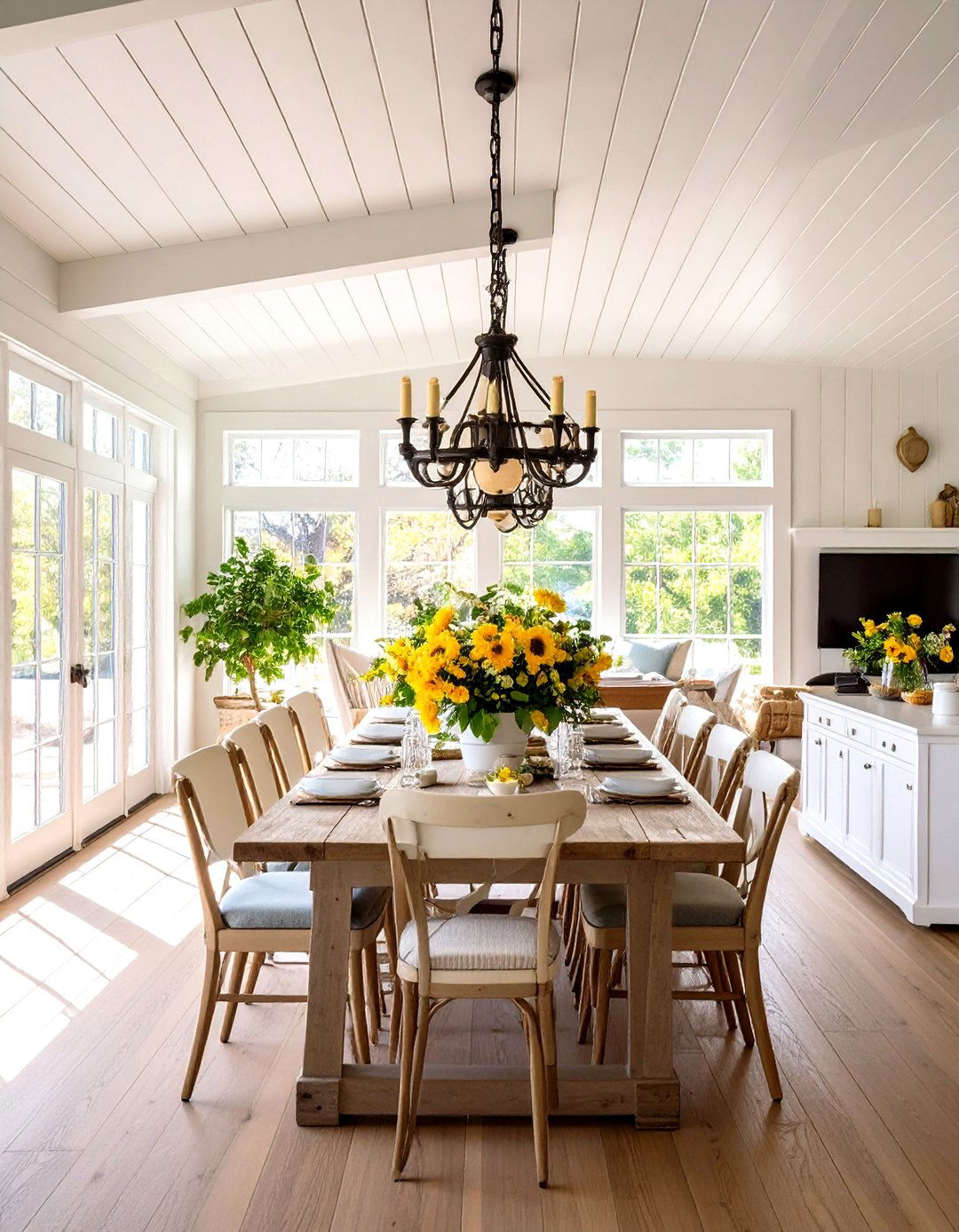
Horizontal or diagonal tongue-and-groove boards painted crisp white—or a weathered gray stain—add subtle texture reminiscent of seaside cottages. Nail boards to furring strips to allow movement, then finish nail holes with wood filler for a seamless surface. Pair the linear ceiling with cane chairs or driftwood centerpieces to reinforce the laid-back vibe. Pinterest
11. Stained Wood-Plank Dining Room Ceiling Adds Cozy Depth
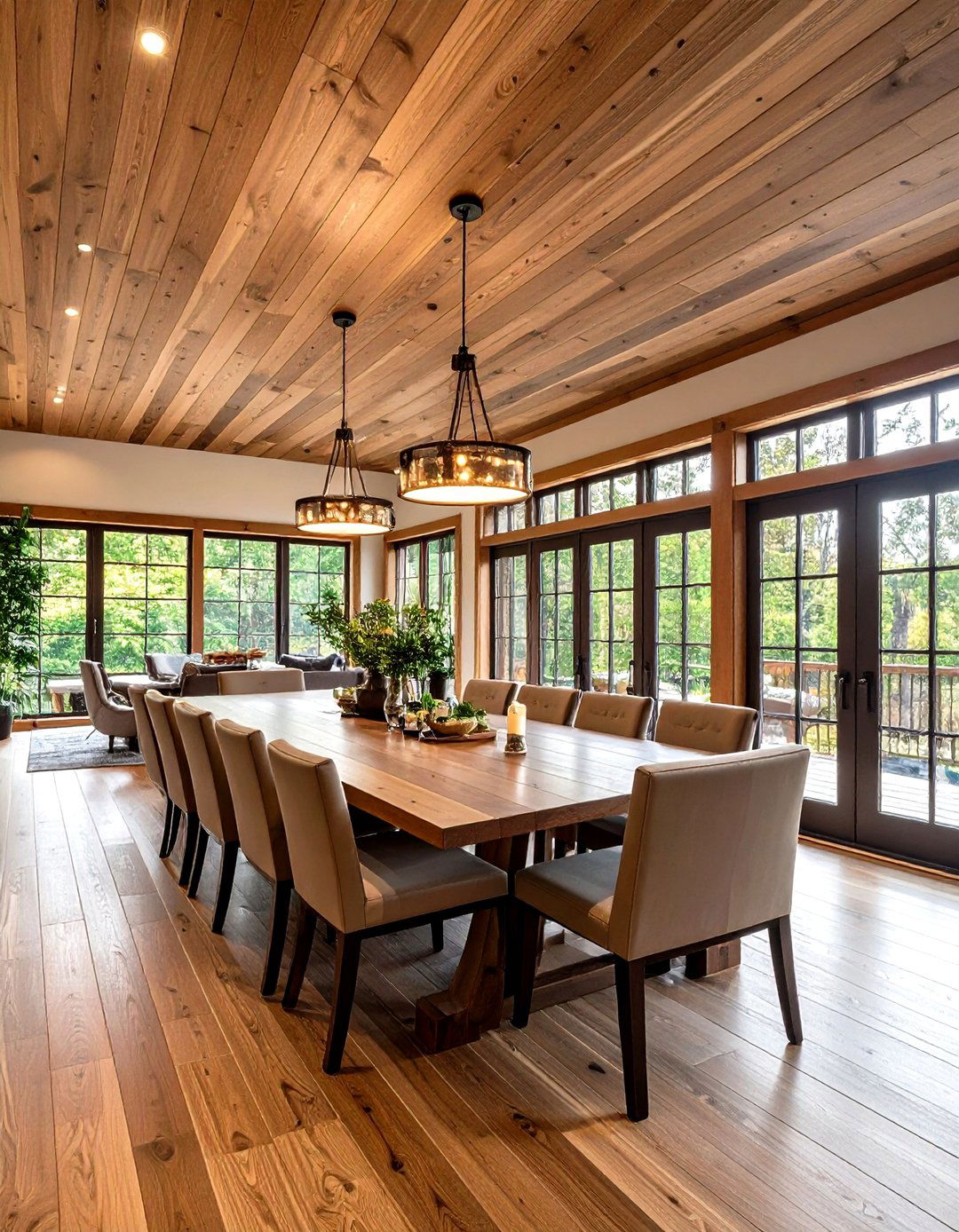
Rich walnut or honey-oak planks directed lengthwise exaggerate the room’s dimension and echo hardwood floors, making the dining zone feel like a warm cocoon. Using prefinished, click-lock engineered boards speeds installation and protects against seasonal expansion. Downlights installed between boards minimize the number of perforations and keep sight lines uninterrupted. Pinterest
12. Vaulted Dining Room Ceiling with Right-Size Chandelier

A cathedral or A-frame ceiling feels airy, but hanging the light correctly is critical: pros suggest converting the room’s metre dimensions into centimetres to find a proportional fixture diameter, then suspending it so its lowest point sits roughly 200–210 cm above the floor. Adjustable rod kits accommodate steep pitches and keep the pendant centered. Visual Comfort & Co.
13. Hand-Painted Dining Room Ceiling Mural Becomes Art
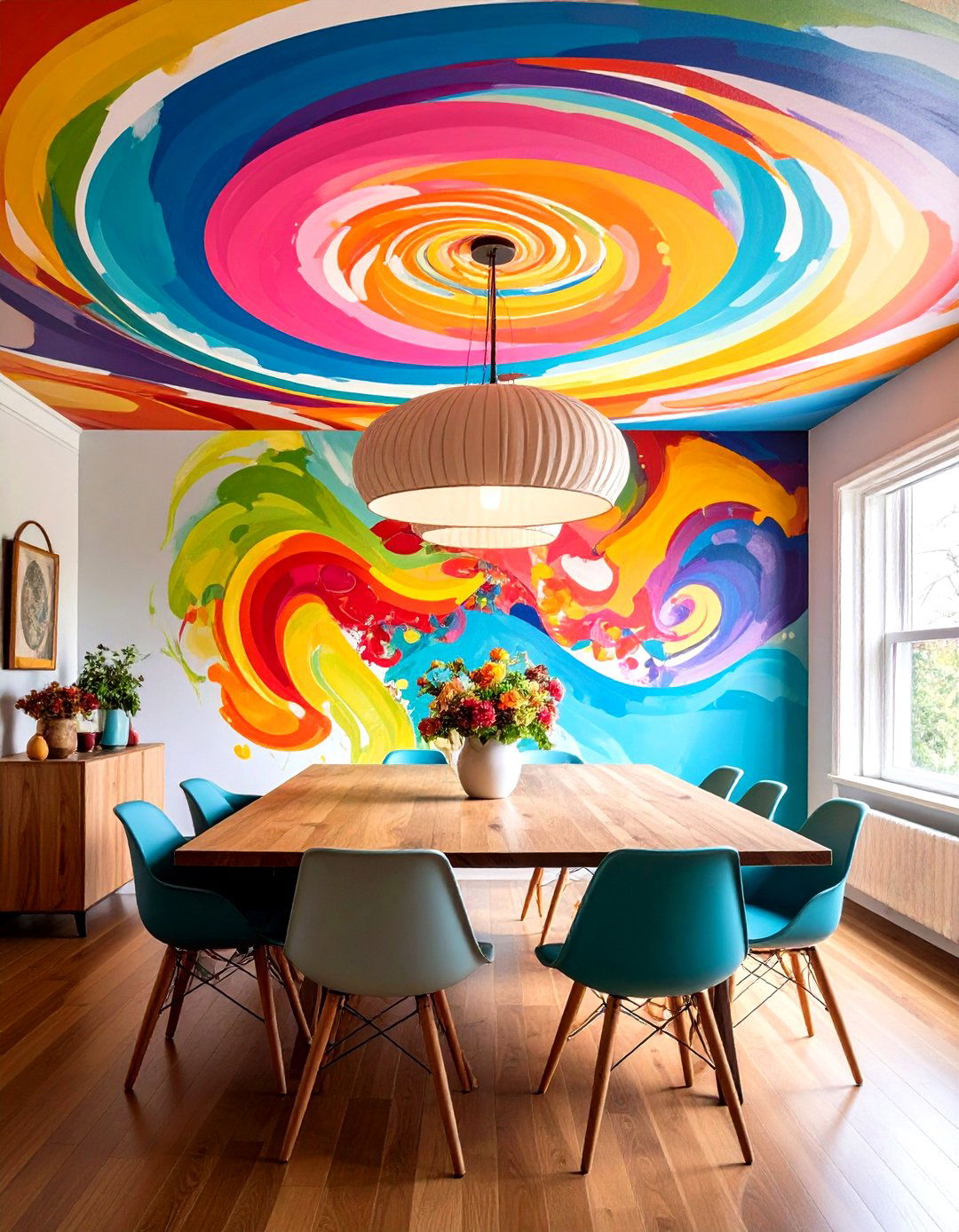
From swirling Van Gogh suns to delicate branches, a bespoke mural turns the ceiling into a conversation piece. Homeowners sketch designs in chalk, seal outlines with primer, then layer artist-grade acrylics; the process may take days, but guests dine beneath a one-of-a-kind canvas. Satin polyurethane topcoat guards against cooking steam and makes future dusting easy. Pinterest
14. LED Cove-Lit Dining Room Ceiling Layers Mood Lighting
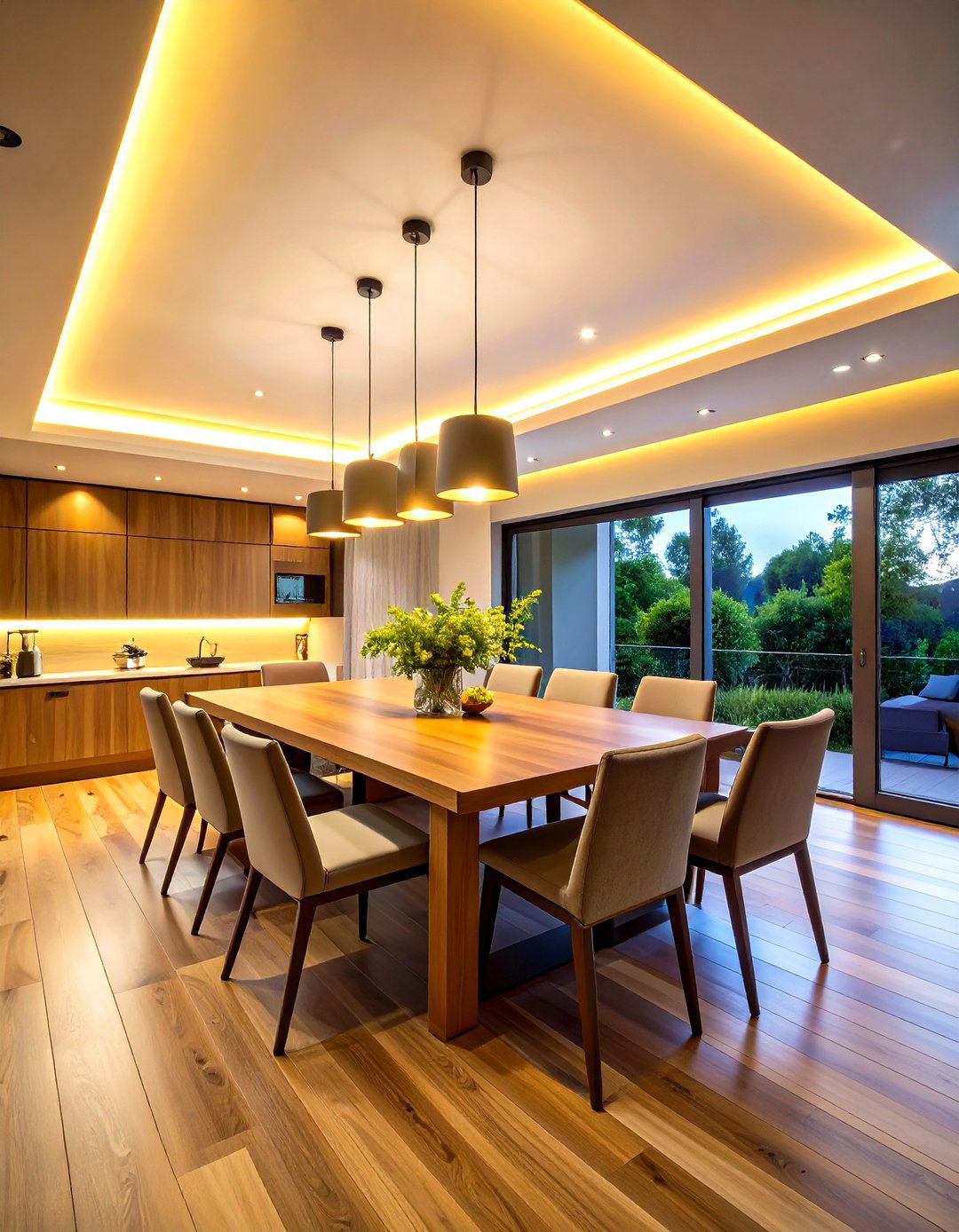
A simple drywall soffit set 15–20 cm below the main ceiling hides flexible LED strips that wash gentle light upward. Dimmable cove lighting softens shadows on faces and amplifies sparkle from tableware without harsh glare. Choose 2700–3000 K warm white ribbons for flattering skin tones, and add smart controls to shift brightness for weekday dinners or festive gatherings. Alcon Lighting
15. Two-Tone Painted Dining Room Ceiling Defines Zones
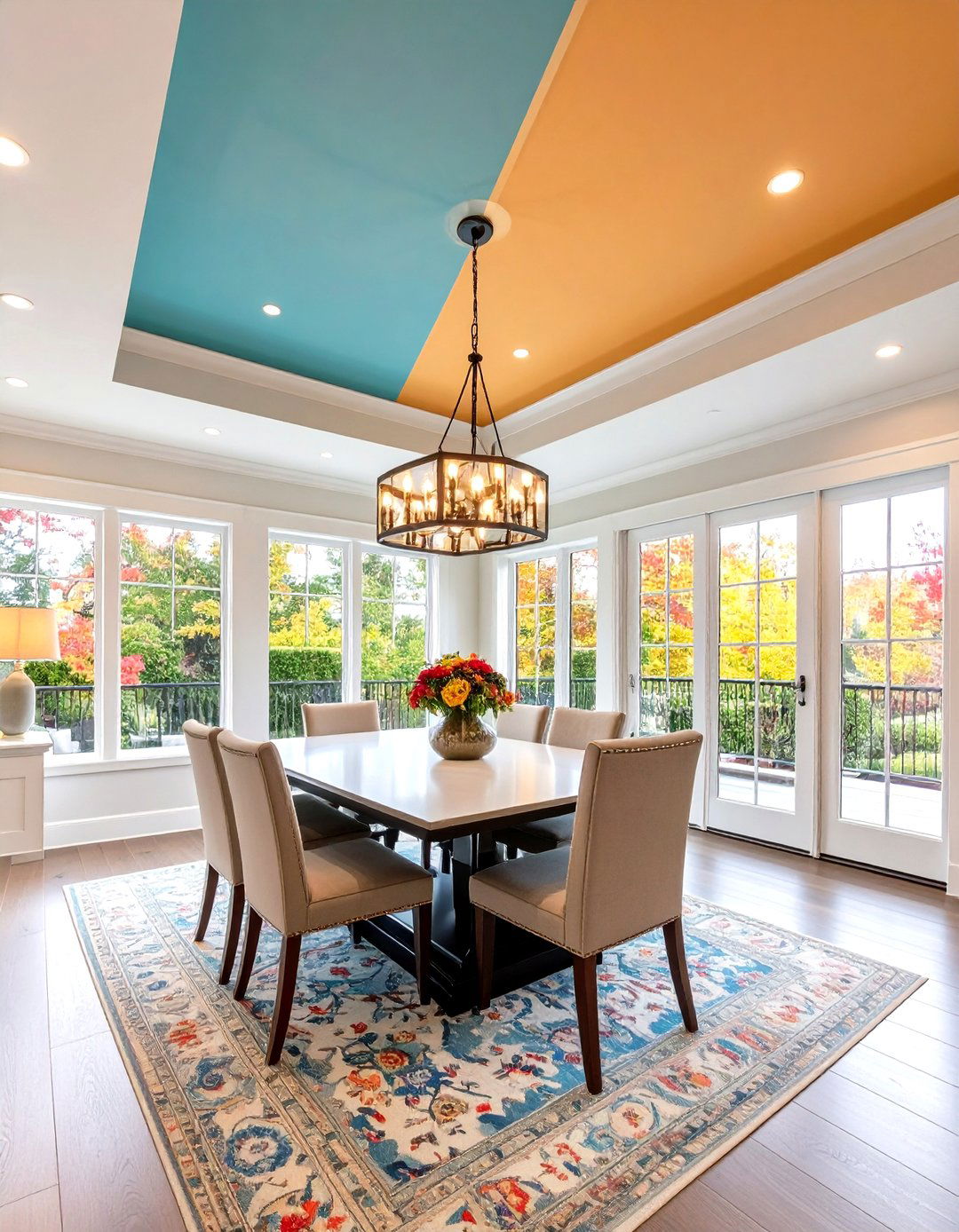
Painting the ceiling a subtler tint of your wall color (or a bold contrast) frames the dining area when it shares space with a kitchen or living room. Professionals recommend a matte ceiling-specific paint for minimal roller marks and mixing 25 % of the wall shade into white for a gentle “tint wash.” Fresh color disguises minor plaster imperfections better than stark builder white. Miss Mustard Seed
16. Drop Dining Room Ceiling Hides Services in Style
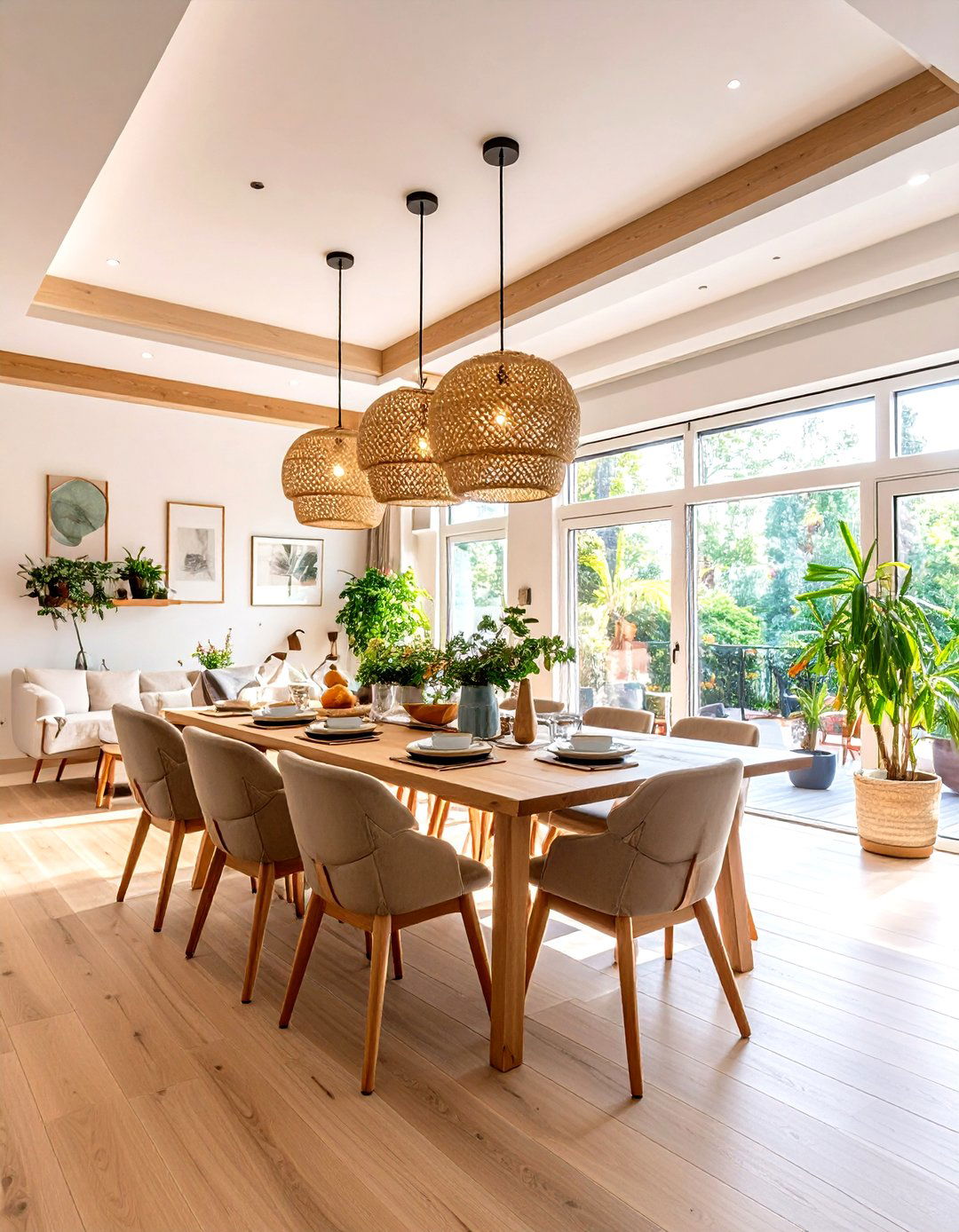
Suspended grids traditionally belong to offices, yet residential versions can conceal HVAC, run new wiring, or house slim LED troffers while presenting a neat finish. Upgrading plain mineral-fibre tiles to flush-edge gypsum panels or patterned tin immediately ups the design quotient. Hinged access panels ensure future maintenance stays simple. Lightopia PacLights
17. Tin-Panel Dining Room Ceiling Channels Vintage Bistro
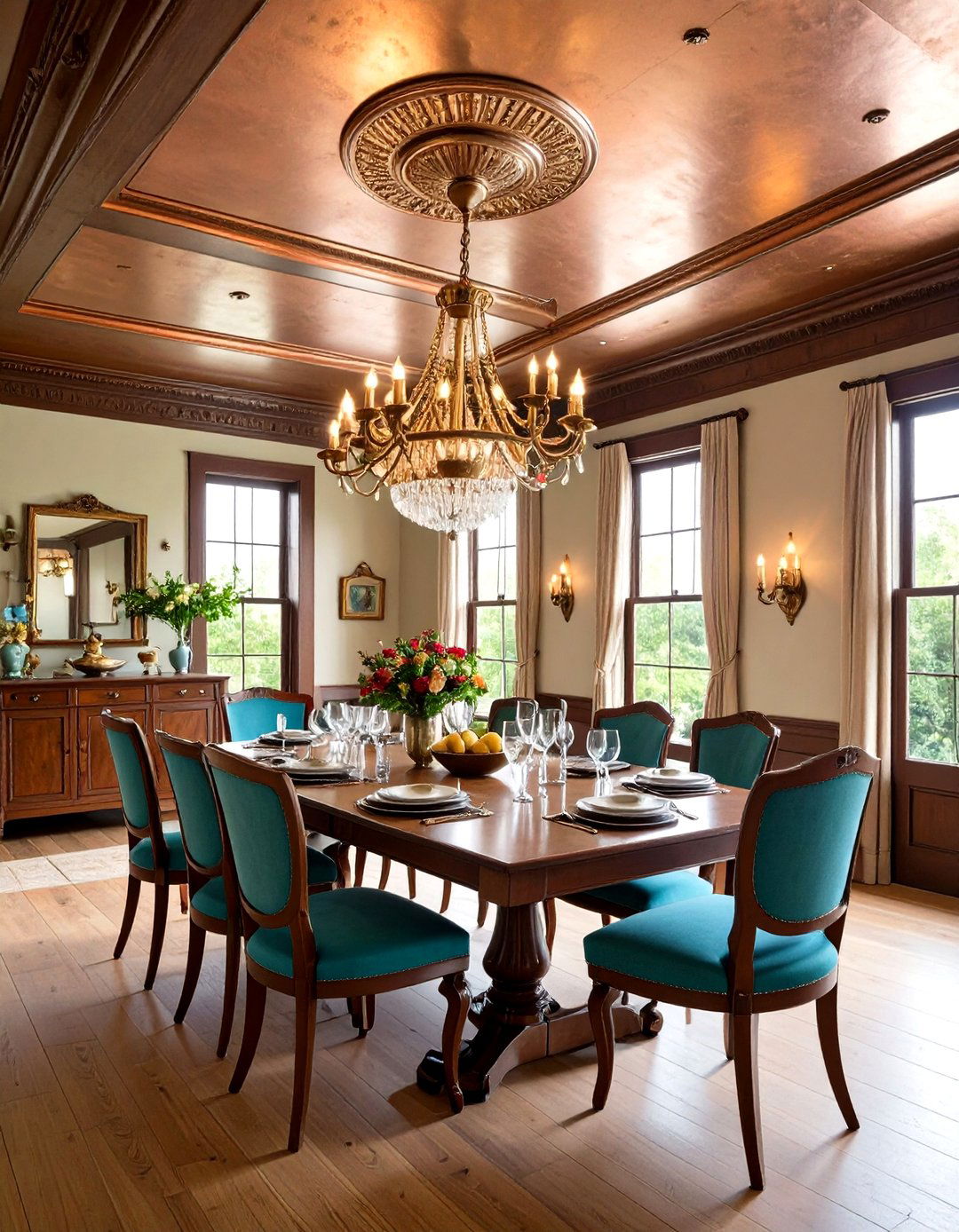
Stamped steel or aluminium tiles with pressed motifs—peonies, fleur-de-lis, even modern geometrics—deliver fire resistance, hidden acoustics, and dazzling reflection. Pre-finished powder-coated panels nail into plywood substrate, and matching filler strips cover seams. Spritzing aged-copper lacquer over bright tin mellows the shine for an heirloom look.
18. Textured Plaster Dining Room Ceiling Adds Subtle Movement
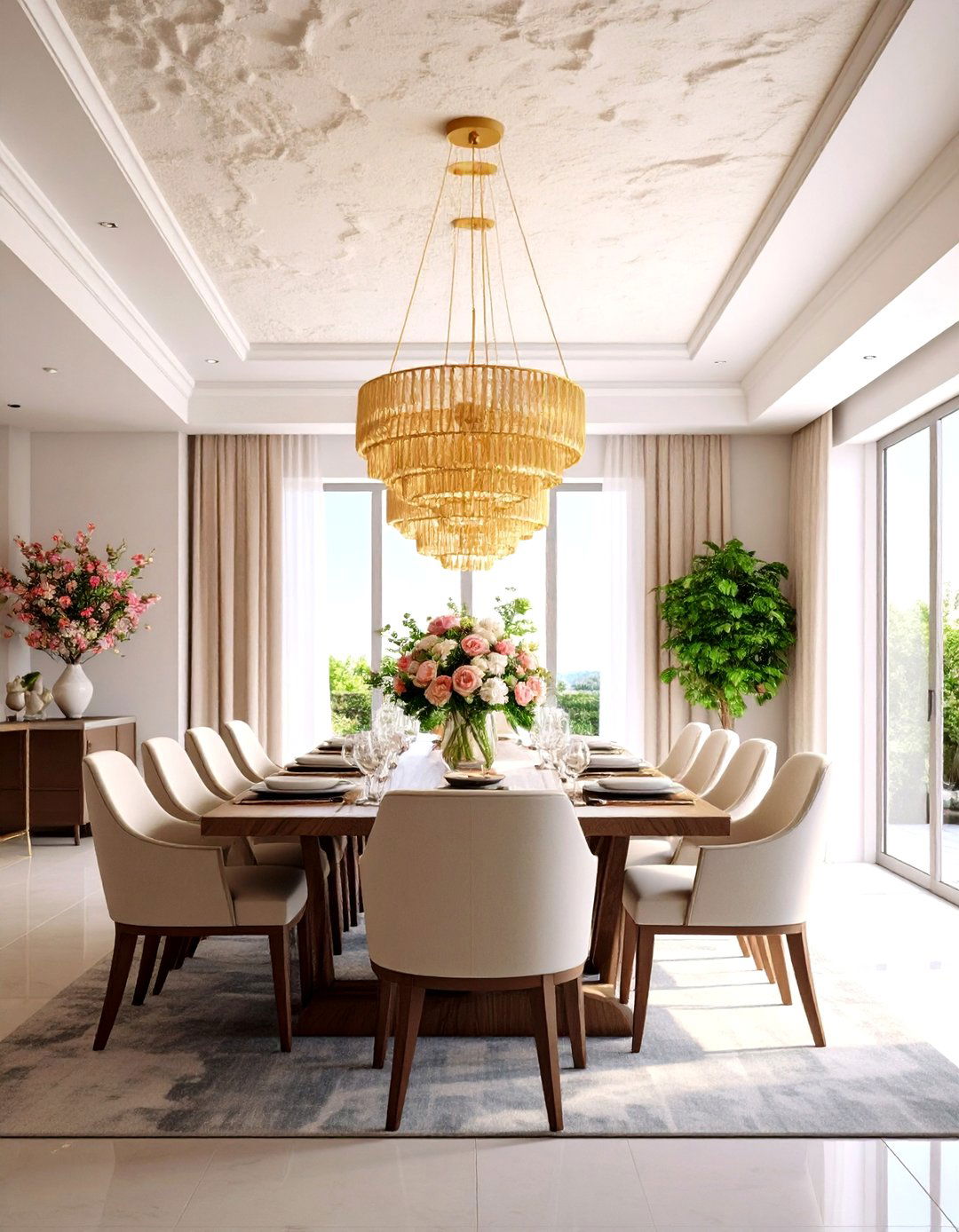
Skip-trowel, swirl, or knockdown textures disguise small waves in old ceilings while scattering light for gentle shadow. Artisans layer joint compound, then knock it down with a wide knife, leaving soft ridges that catch pendant glow. Because heavy textures date quickly, keep patterns shallow and finish with a flat acrylic to reduce dust cling. Better Homes & Gardens
19. Mirrored Dining Room Ceiling Expands Space
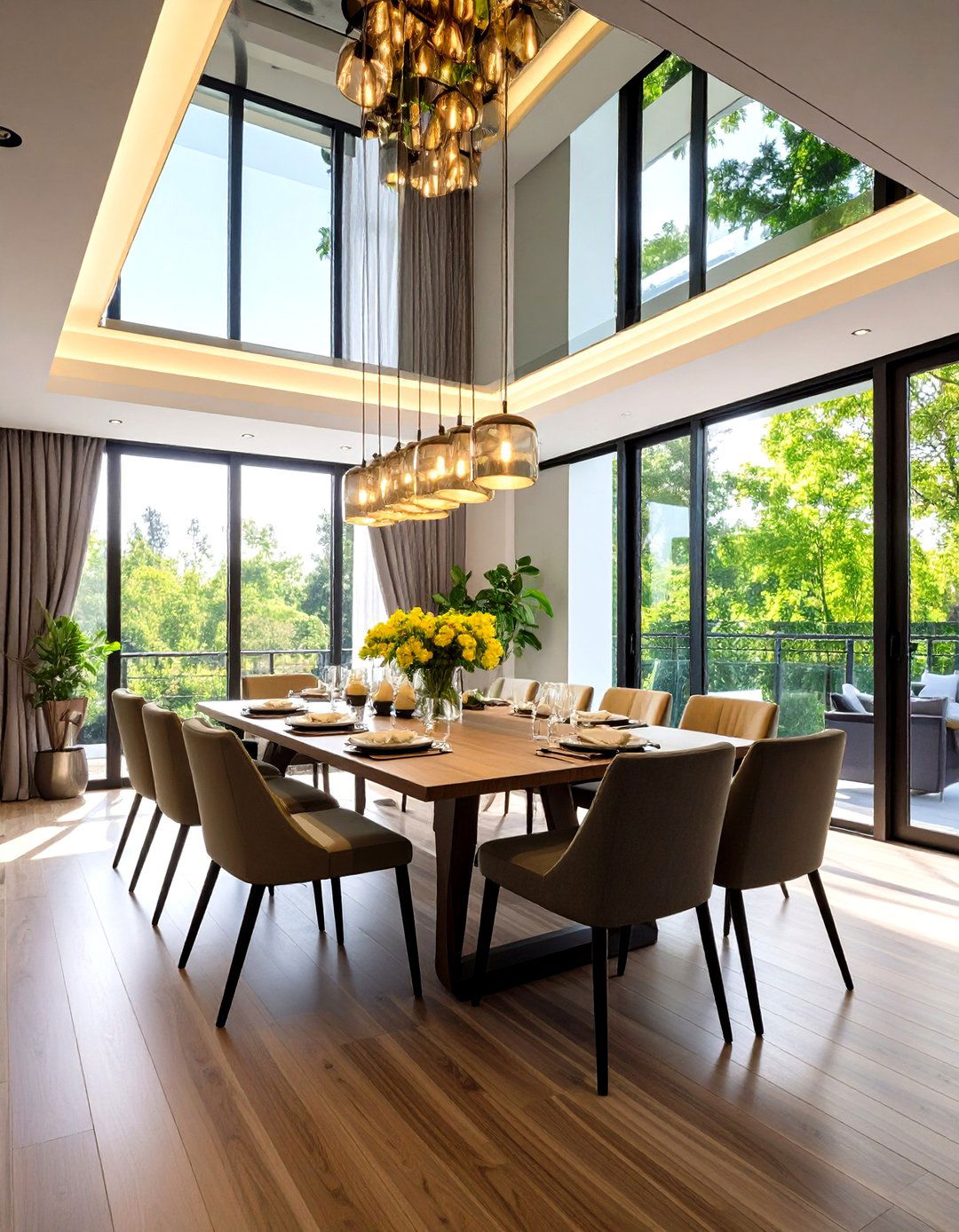
Strategically placed mirrored panels bounce candlelight, double chandelier sparkle, and make compact dining rooms feel twice their size. Modern acrylic or stretch-film mirrors weigh far less than glass and install on a cleat system with safety lanyards. Limit the treatment to the tray center or a narrow perimeter band so reflections feel intentional, not disco. Pinterest Lushome
20. Minimalist Flat Dining Room Ceiling Highlights a Showpiece Light
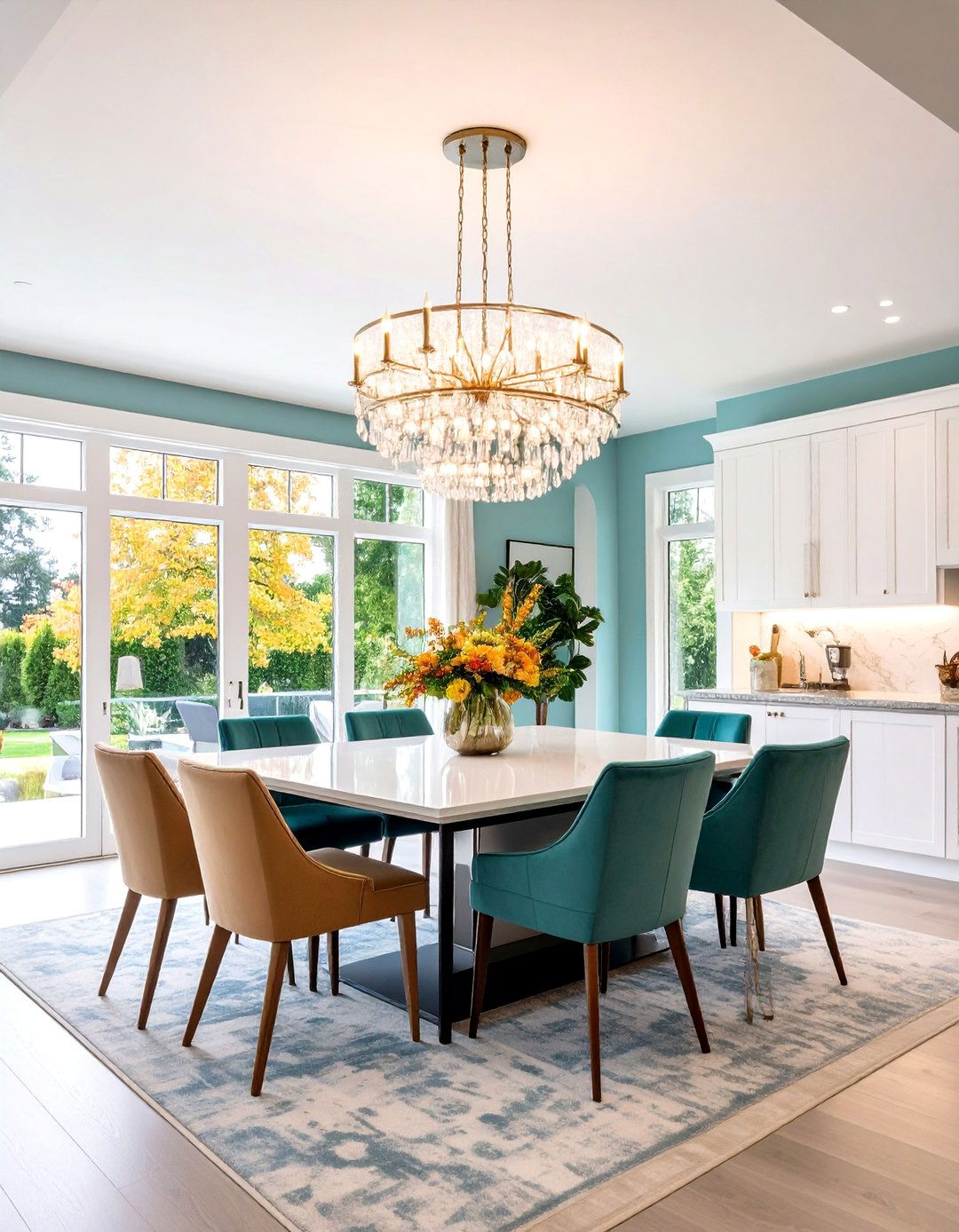
Sometimes simplicity wins: a perfectly skim-coated, crisp white ceiling creates a gallery-like backdrop for the sculptural statement chandeliers that dominate current design forecasts. Smooth drywall lets bold fixtures—like ribbon LEDs or blown-glass clusters—take center stage, while integrated mini can lights on a separate dimmer provide ambient fill when the showpiece dims for dessert. Decorilla
Conclusion:
The ceiling often goes unnoticed until a thoughtful detail changes the way the room feels, sounds, and glows. From the subtle hush of acoustic clouds to the rich drama of metallic paint or vintage tin, each idea offers a distinctive route to elevating everyday meals. Pick the concept that matches your dining room’s height, architectural style, and lifestyle demands, and let the “fifth wall” become the quiet hero of your next gathering.



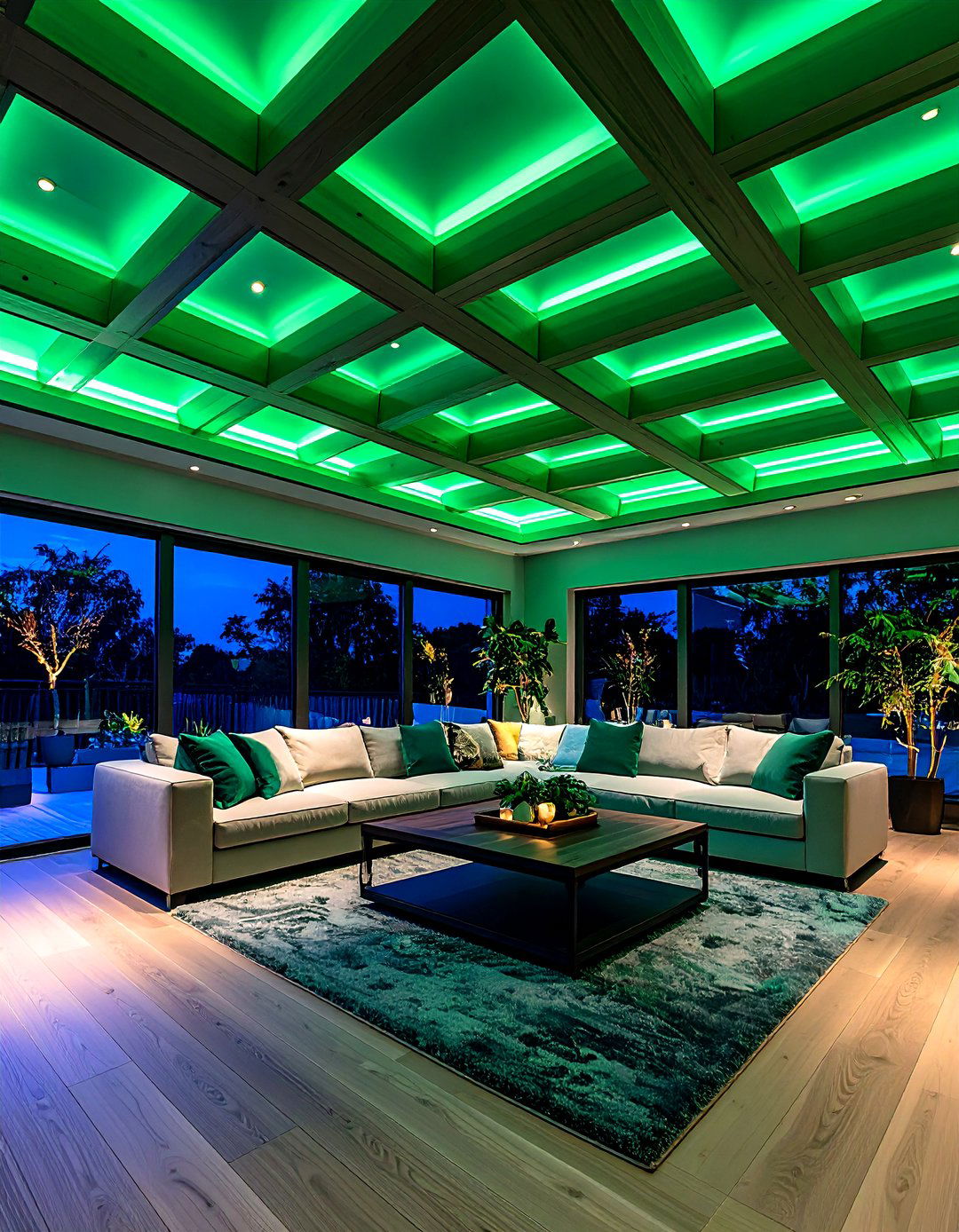
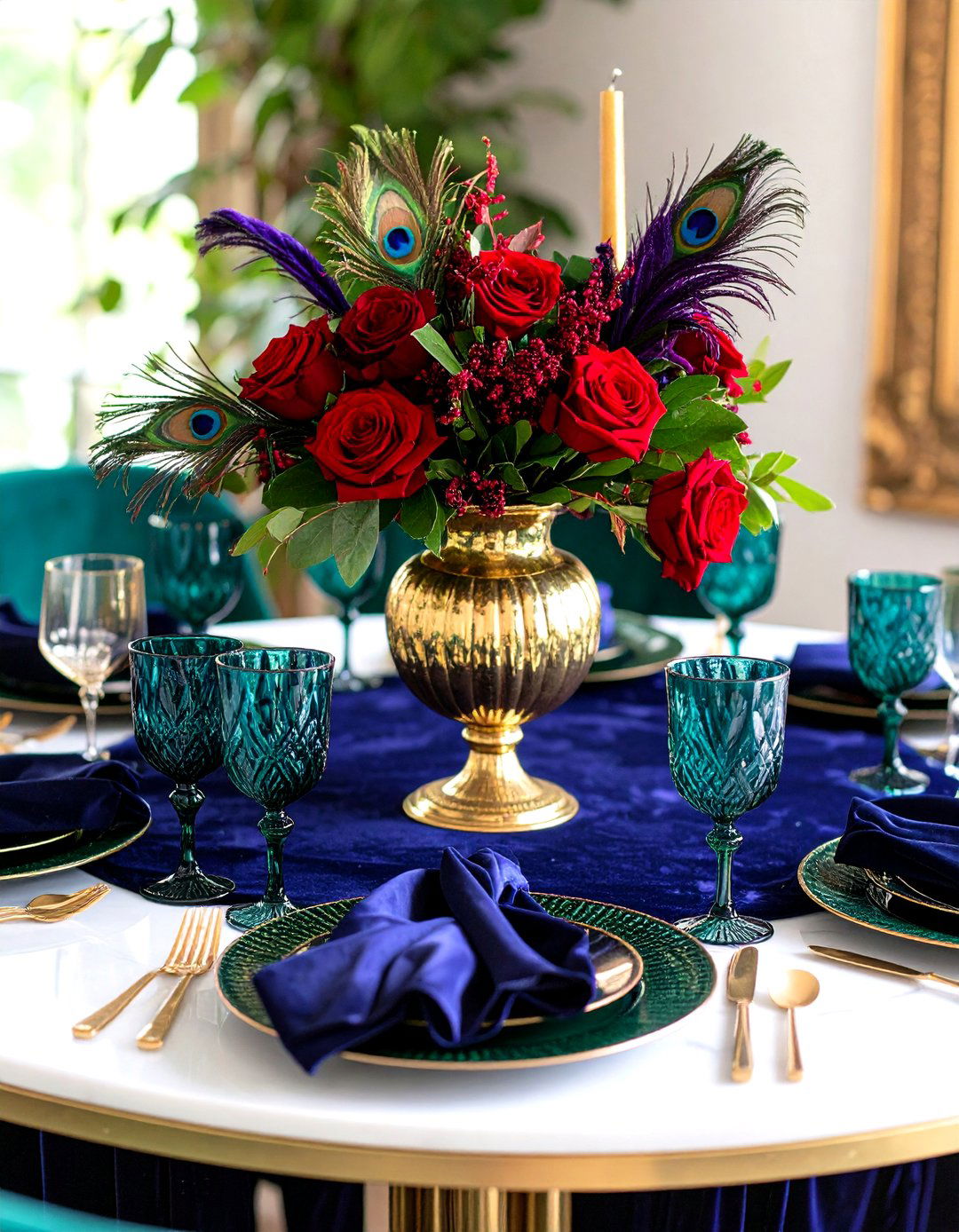
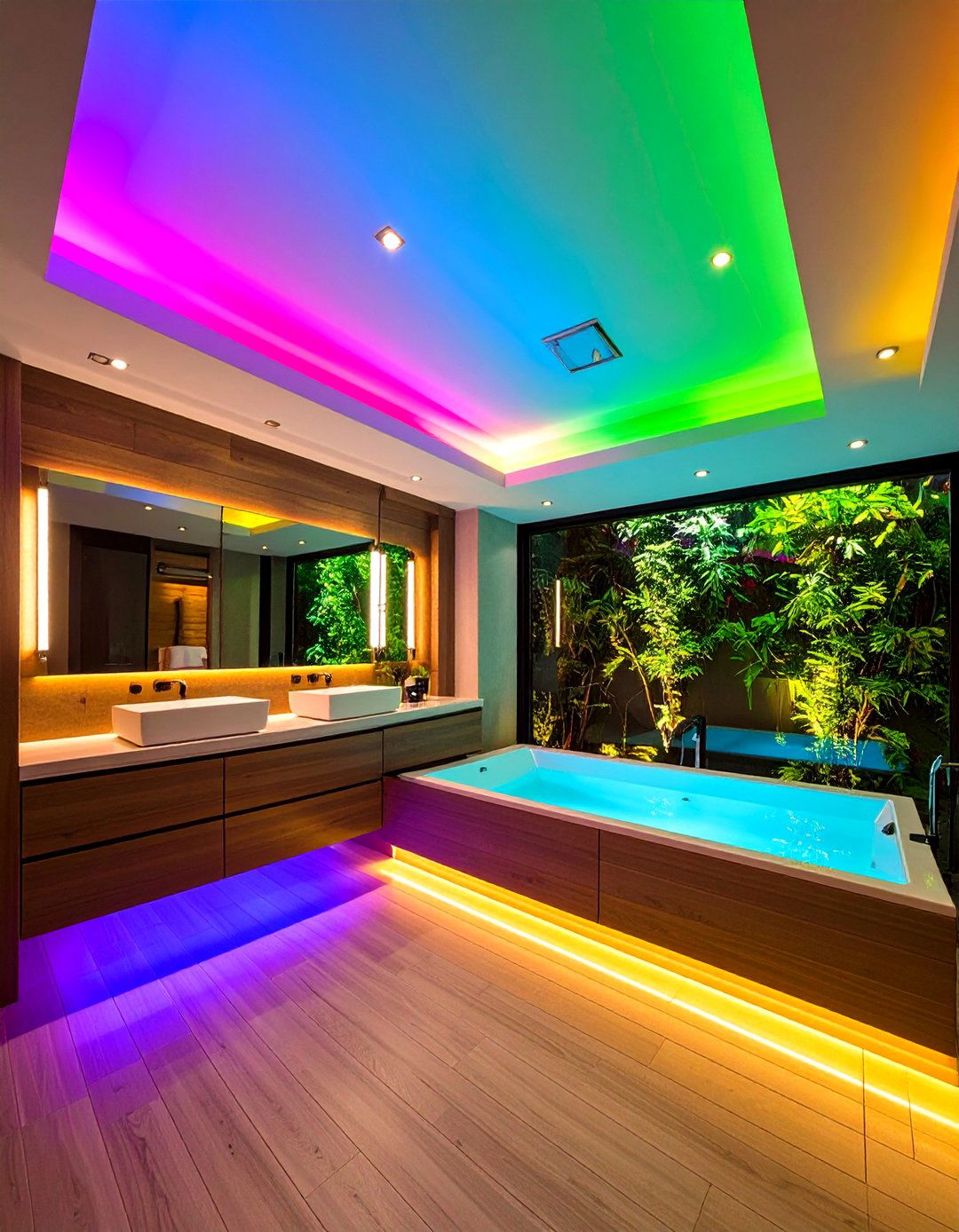
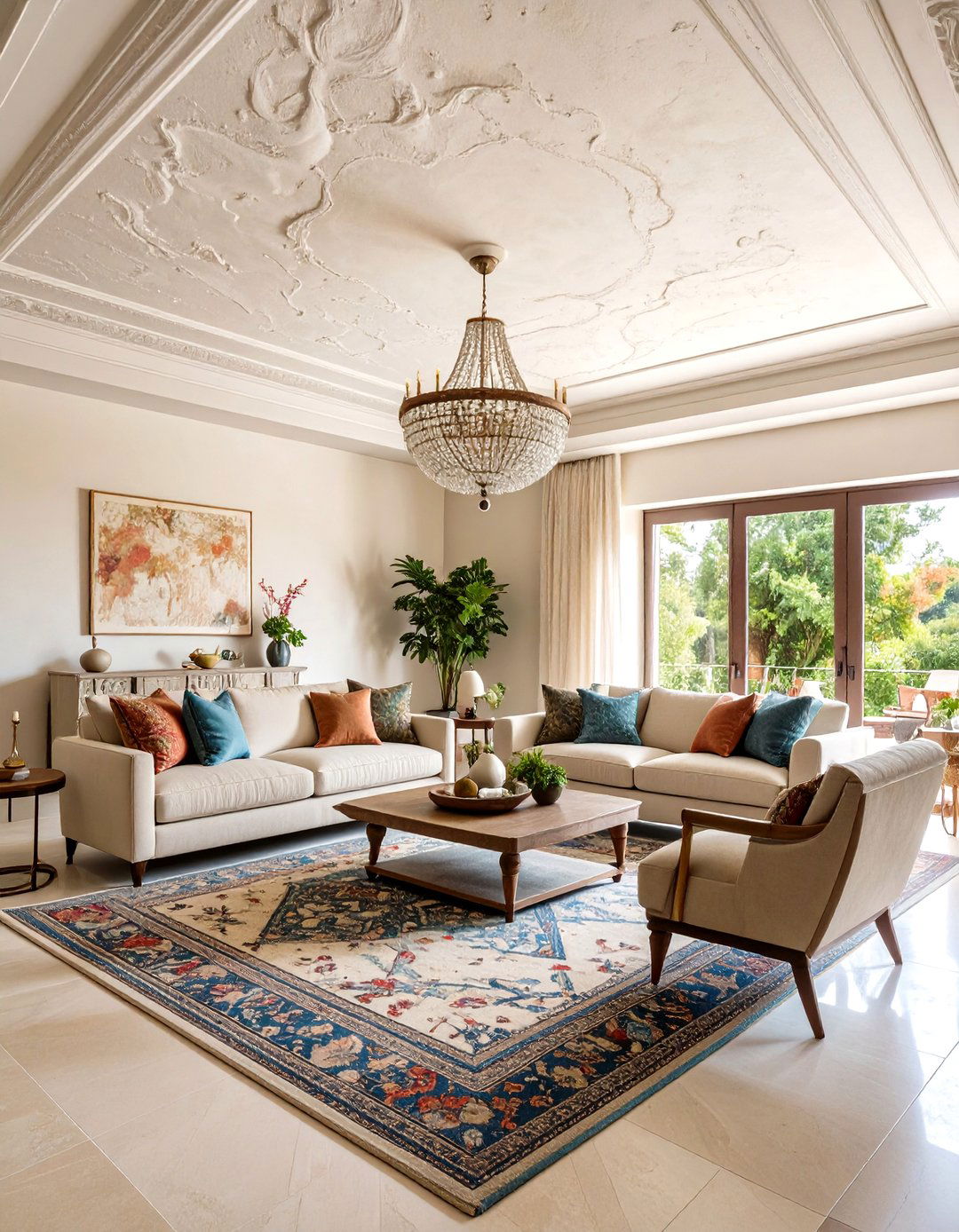
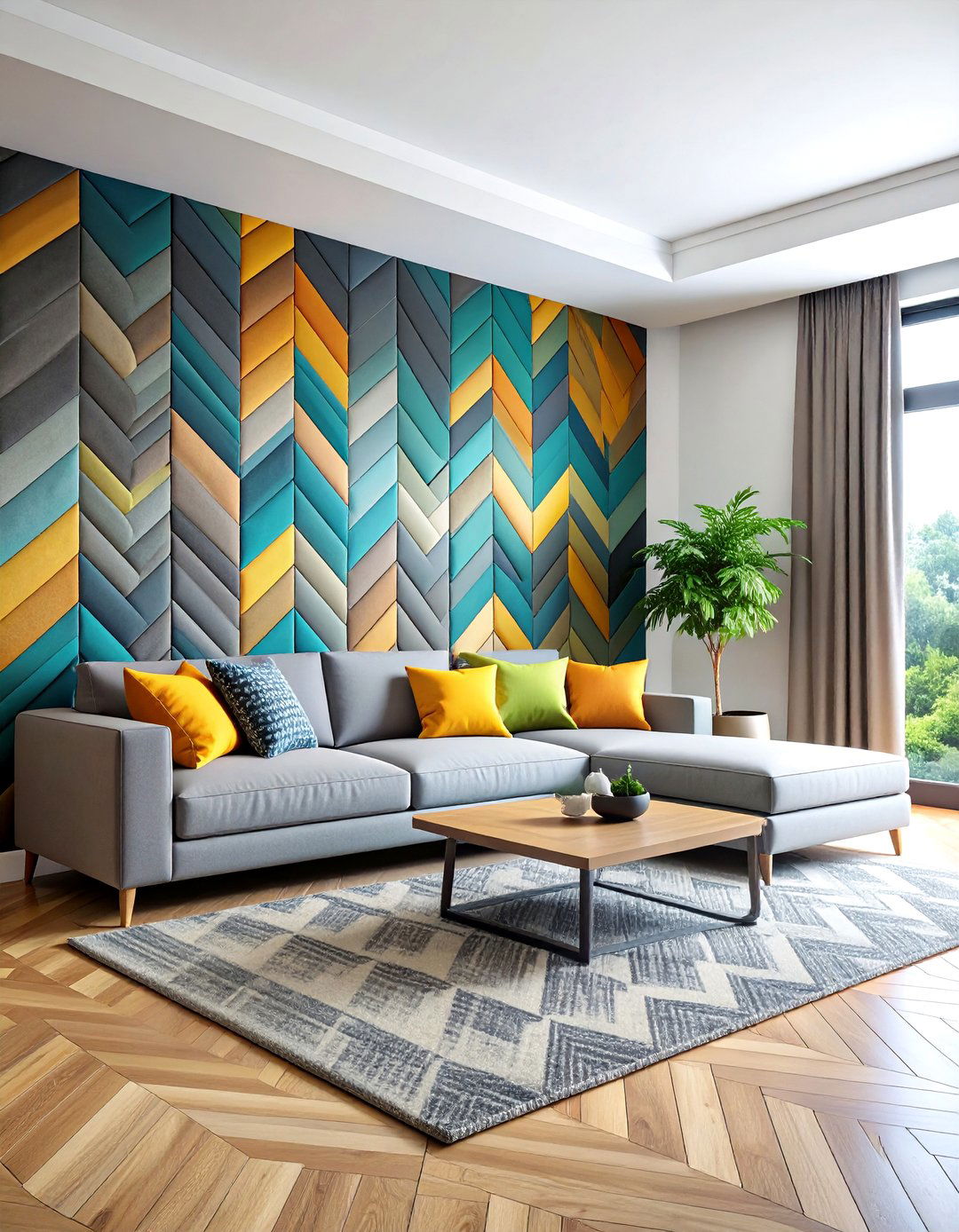
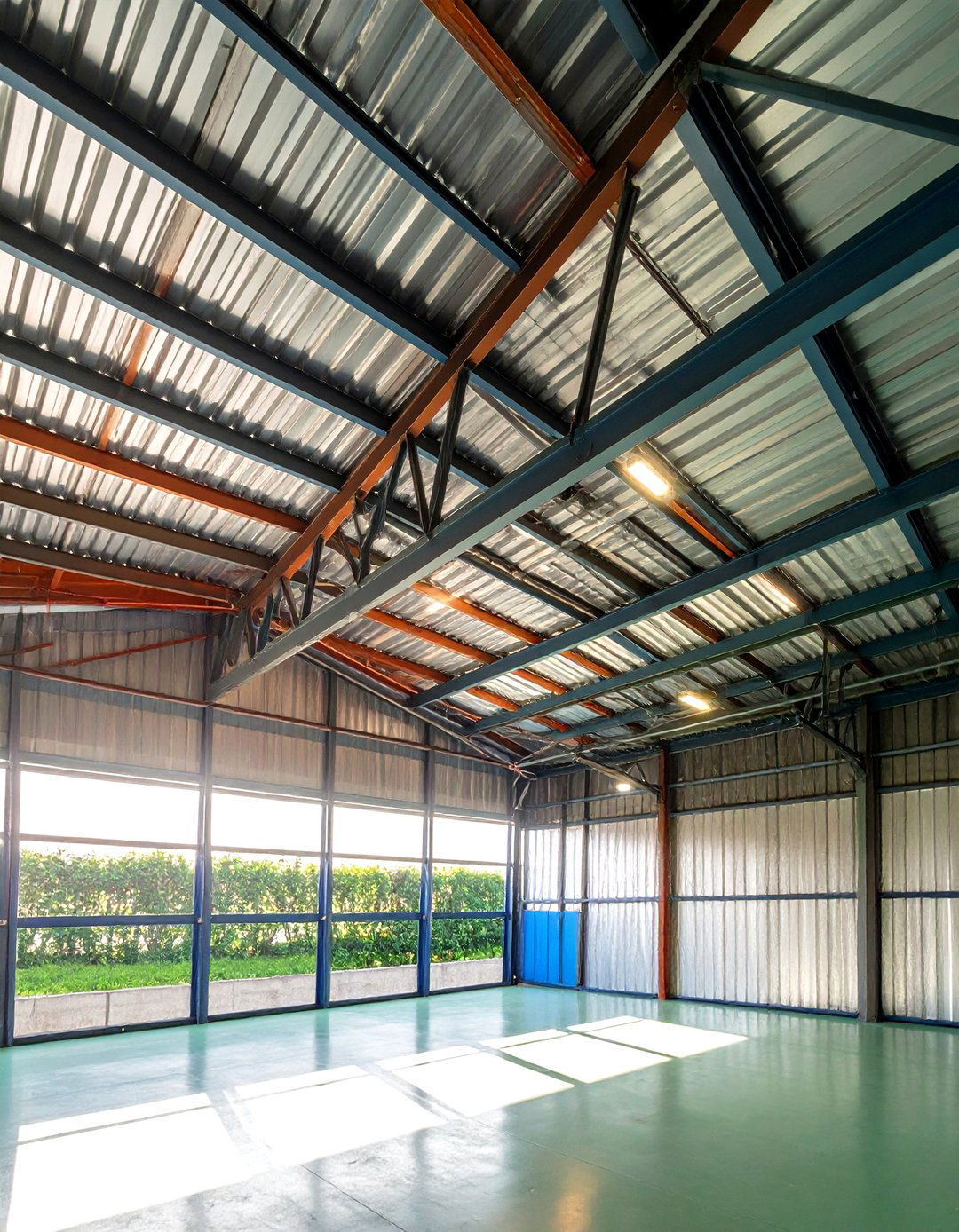
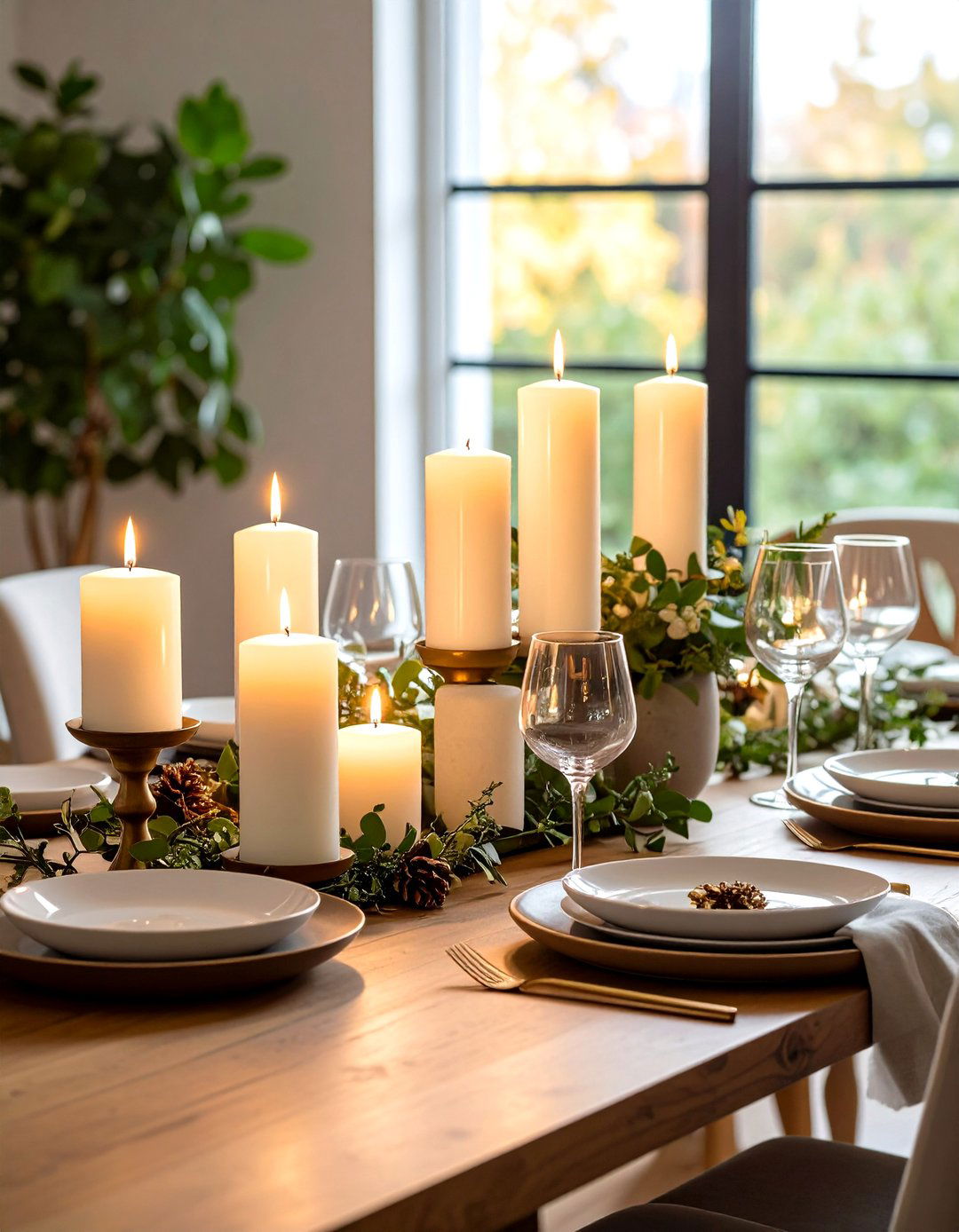

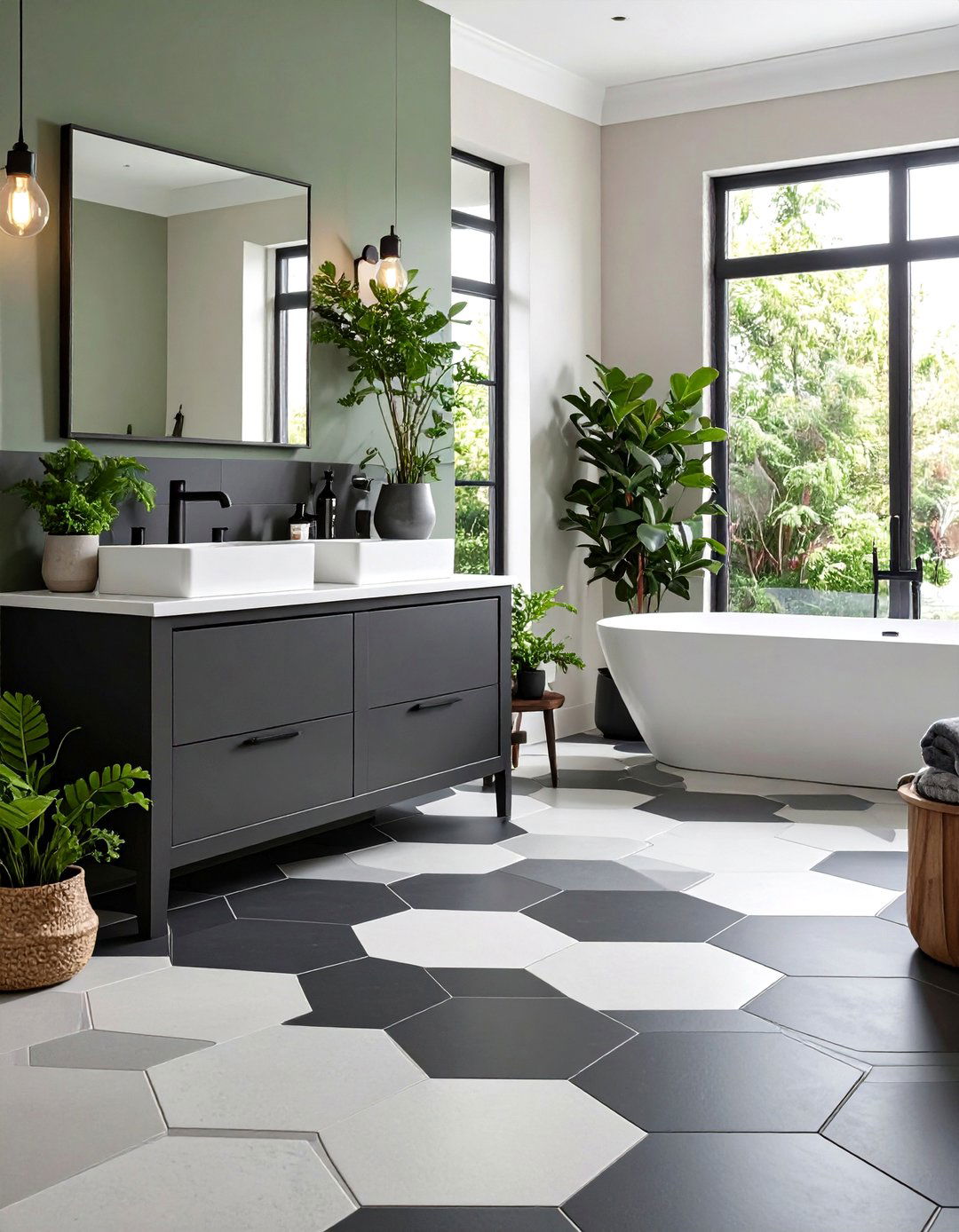
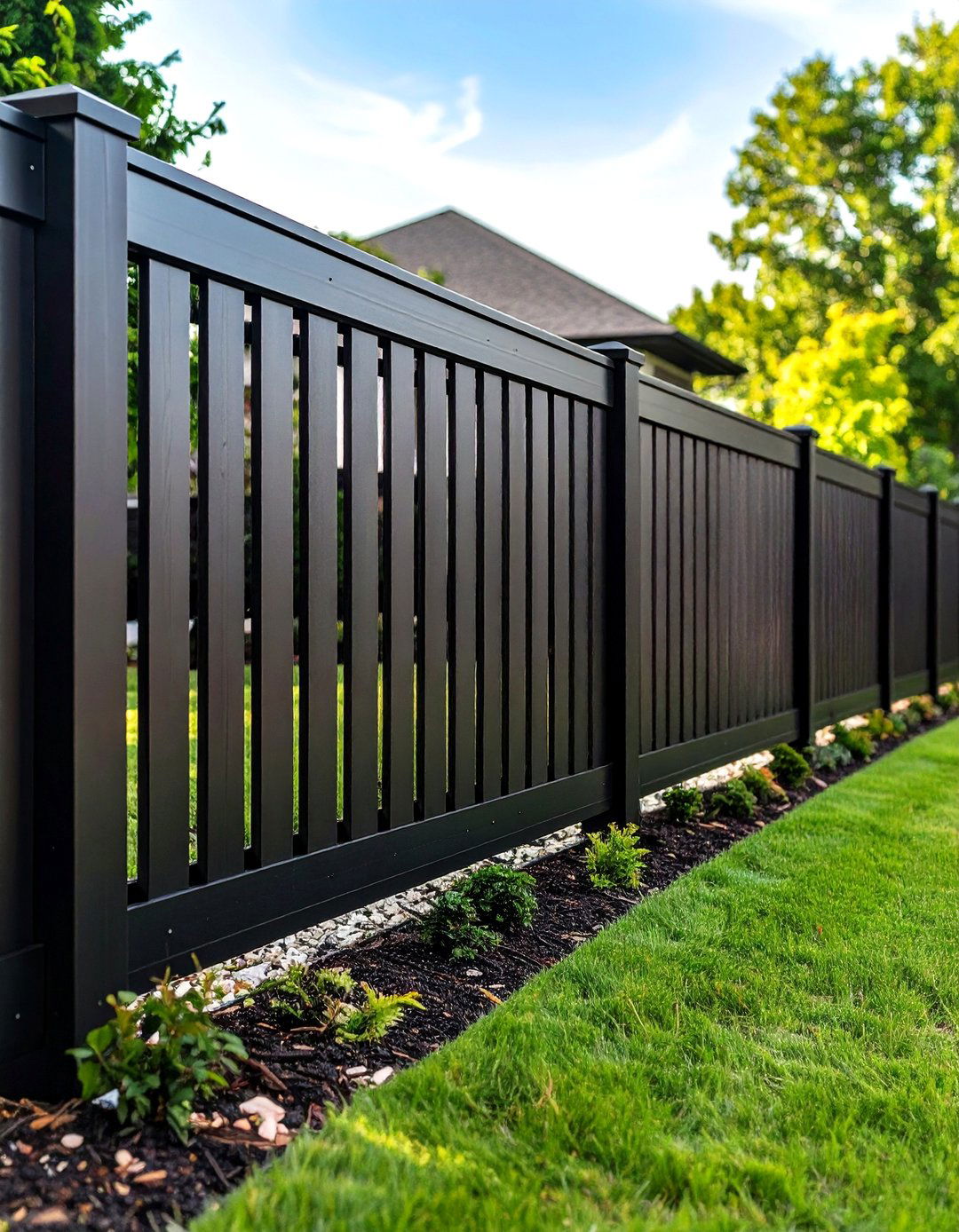
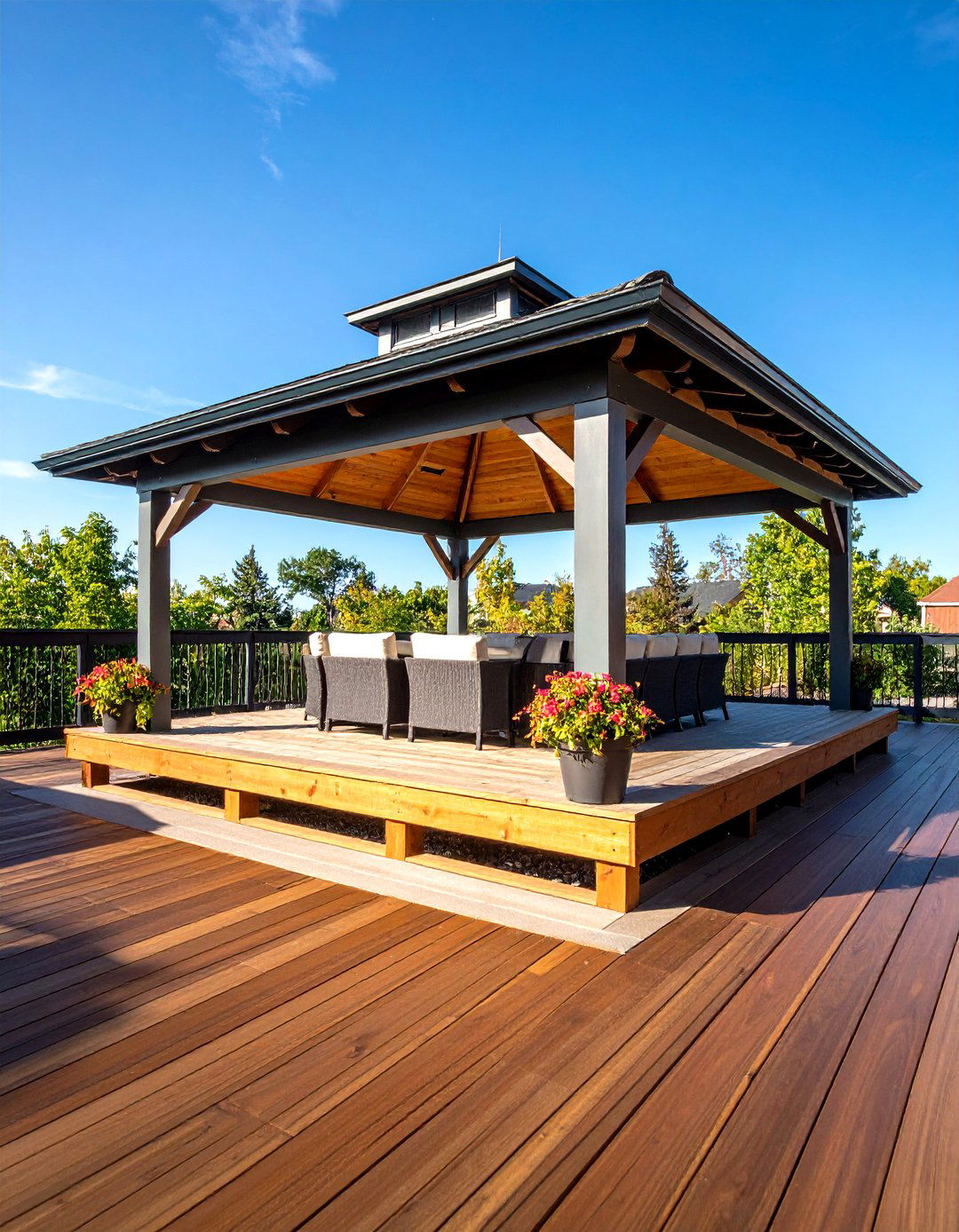
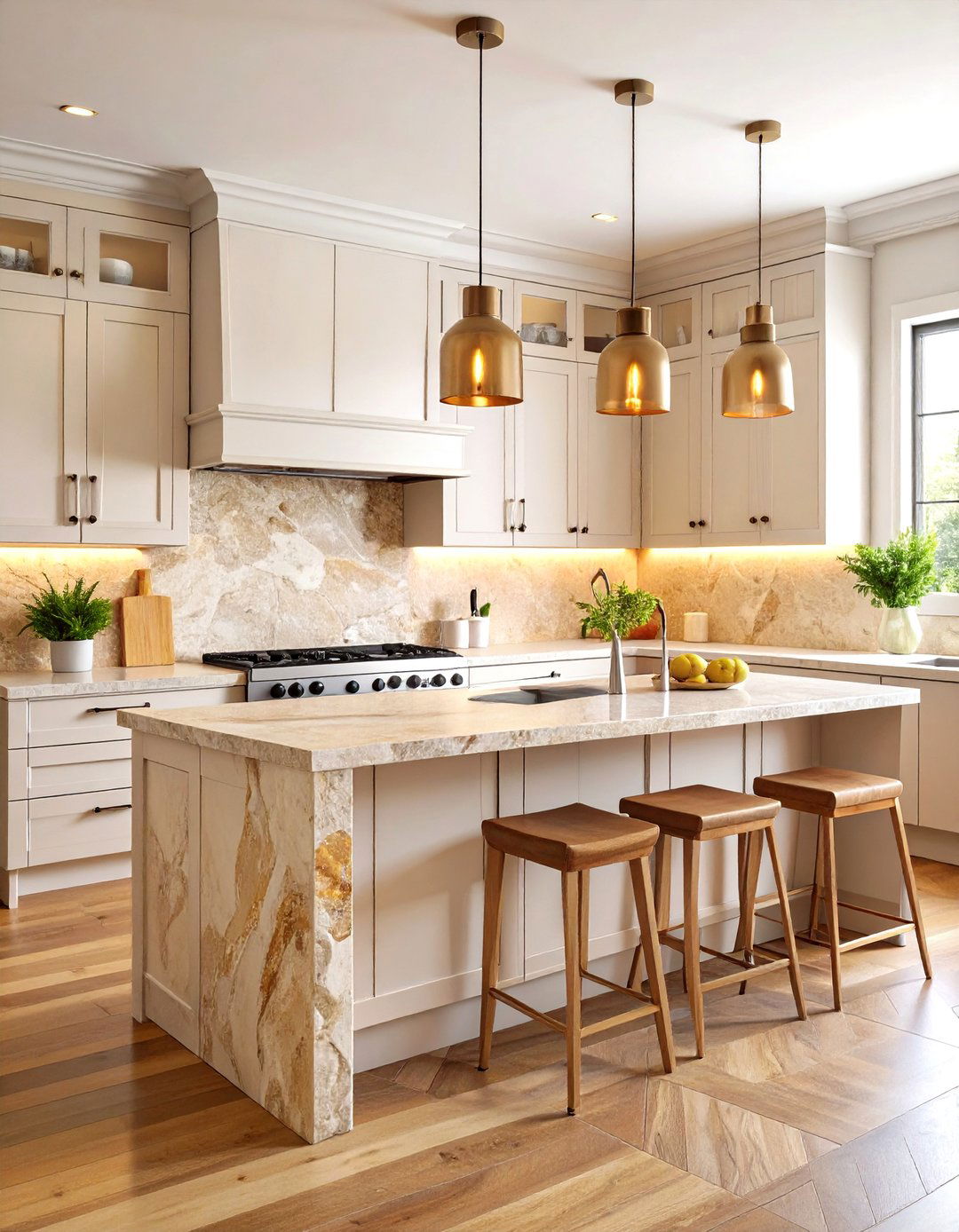
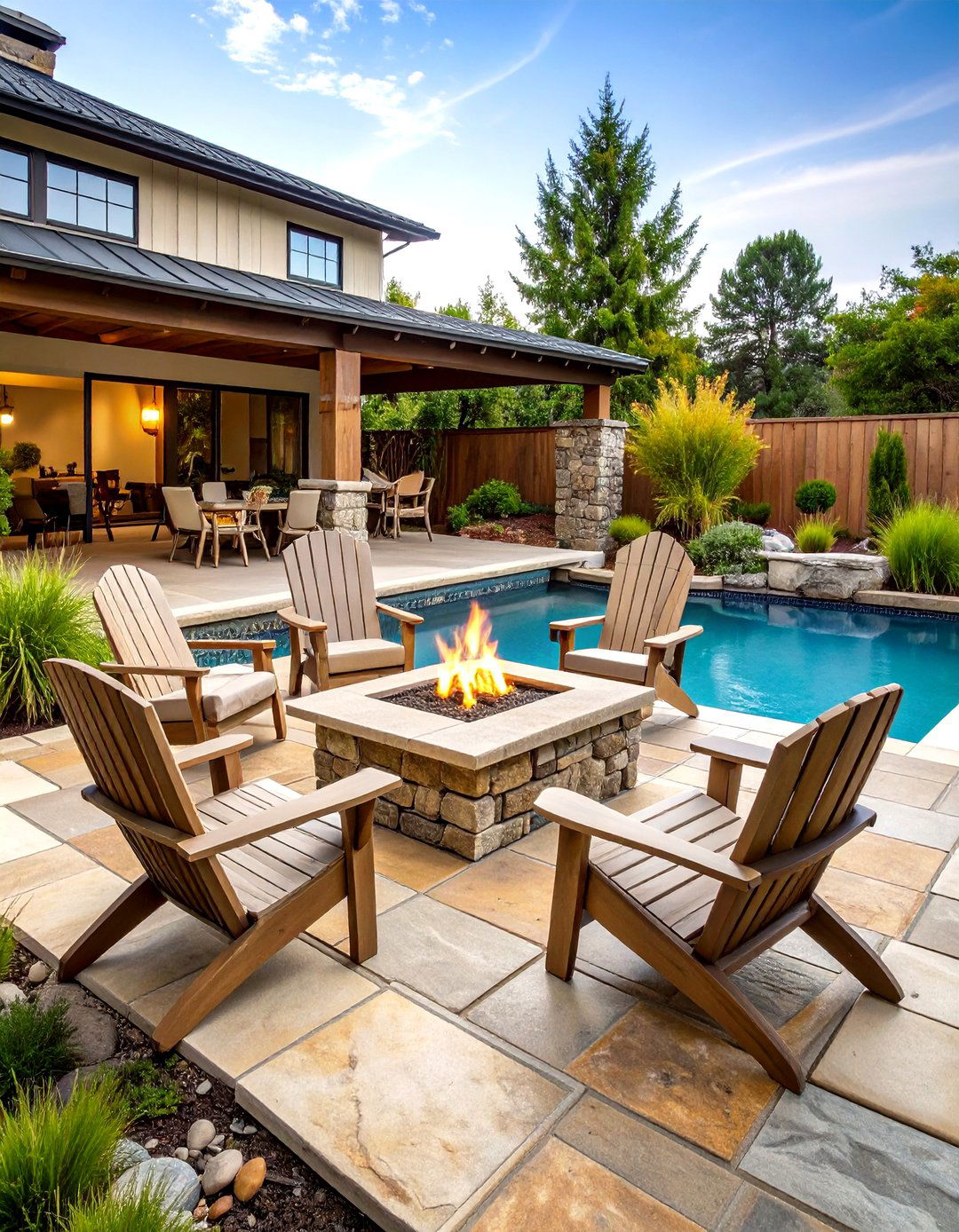
Leave a Reply